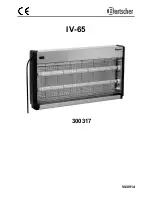
Stress Echo
8-6
ACUSON Cypress™ Operator’s Manual
ECG
Signal Quality During Stress Echo Exam
A high-quality
ECG
signal is essential for a successful stress echo exam. Typi-
cally, stress echo exams rely on the
ECG
to trigger the acquisition of images.
ECG
artifacts can cause inaccurate timing of this trigger and interfere with image
acquisition. So, it is important to minimize problems created by
ECG
artifacts
during stress echo exams.
Artifacts may be more of a problem during stress studies than during routine
rest studies because of increased muscle movements and respiratory rates.
Both respiratory artifacts and muscle motion artifacts can cause problems dur-
ing exercise stress studies. During pharmacological stress studies, there may
be increased respiratory artifacts, though muscle motion artifacts typically are
not an issue.
If artifacts are present and detected as a heart beat, the heart rate displayed by
the system may become inaccurate.
Reducing
ECG
Artifacts
Recommended techniques to reduce
ECG
artifacts during stress echo include:
Use a 12-lead electrocardiograph
.
The Cypress system does not incorpo-
rate a 12-lead amplifier. However, your electrocardiograph unit may have an
ECG
output signal which can be input into the Cypress system
ECG
input.
Using a 12-lead input provides the highest quality signal.
Use a square-wave pulse output
.
Your electrocardiograph unit may also
provide a square-wave pulse output signal which can be input into the
Cypress system
ECG
input. This output signal can be used to provide a more
robust R-wave trigger signal.
















































